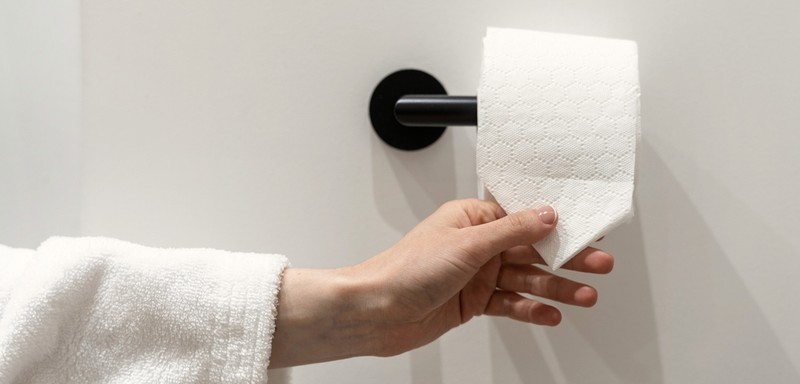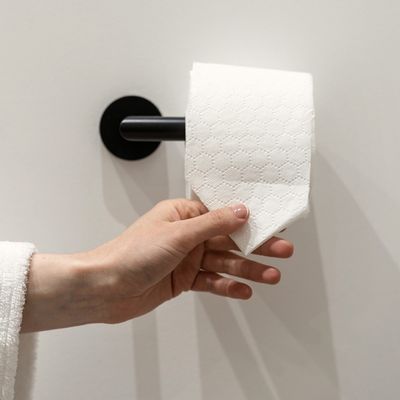

How To Strengthen Your Pelvic Floor
Know The Signs
The pelvic floor may not be a muscle that gets much air-time, but it plays an integral role in bladder control, supporting the pelvic organs and making sex enjoyable. “Without the pelvic floor, our internal organs would have no support and would, in theory, fall through the bottom of the pelvis,” says Pilates instructor Hollie Grant. “The muscles of the pelvic floor span almost like a hammock from the tailbone to the pubic bone and out to the sit bones. It wraps around the urethra, vagina and anus, and therefore controls the release and contraction of these holes.” When the pelvic floor becomes weakened, symptoms can be far-reaching and feel debilitating, adds Kathryn Levy, pelvic health physiotherapist at The Lowdown. “Incontinence of both the bladder and bowel are signs your pelvic floor muscles aren’t doing their job properly,” she tells us. “Pain in your vulva, urethra or clitoris; pain with urination, bowel movements, sex or exercise; or feelings of heaviness or pressure are also signs of pelvic weakness.”
Choose The Right Exercise
If you do high-impact exercise, especially if it involves jumping, running or lifting heavy weights, you’re more at risk of pelvic health problems. Studies show 44% of female runners are affected, and a separate study published a couple of years ago also showed female weightlifters had urinary problems when performing exercises such as the deadlift. “Pilates is a great way to strengthen the entire body, including your pelvic floor, but bear in mind that when it comes to exercise, a lot of the time it’s more about how you complete an exercise rather than the exercise itself,” says women’s physiotherapist Clare Bourne. “Making sure you breathe properly when exercising without holding your breath is important for pelvic health. You should also avoid lifting very heavy weights, which can exert excessive strain down into the pelvic floor,” Clare adds.
Consider Hormone Therapy
As levels of oestrogen fluctuate with age, this can affect the tone of the pelvic floor, says Clare. “Lower levels of oestrogen can lead to the vulval and vaginal tissues becoming drier and thinner, which can ultimately lead to incontinence. If you think hormonal changes may be to blame for your pelvic floor problems, chat to your GP about getting a prescription for topical oestrogen. A cream or tablet containing oestrogen that’s applied directly inside the vagina can help improve symptoms of urinary incontinence,” she says.
Eat A Balanced Diet
If you are constipated, or often strain when you go to the toilet, this can weaken the pelvic floor. “When you are constipated and strain to open your bowels, this puts significant strain on the pelvic floor, which may already be weakened through age and natural post-menopausal changes,” says Clare. “Keep constipation at bay by ensuring you are eating enough fibre, drinking enough water and staying active throughout the day. It can also be helpful to find your triggers – caffeine, artificial sweeteners, fizzy drinks and a high salt diet can all irritate the bladder and are worth cutting back on if you are experiencing symptoms linked to your pelvic floor.”
Do Your Kegels
Fortunately, there are things you can do about a weak pelvic floor, although it requires consistency. “We can strengthen the pelvic floor in the same way we tone any other muscle in the body, by correctly engaging it and challenging it to do more,” explains Hollie. “The key is knowing how to contract, isolate and engage it correctly. This is sometimes tricky for women, as it’s a deep muscle that we can’t visualise easily, so we have to actually feel that we are doing it correctly.” To identify the muscle, imagine you are having a wee, then stop it mid-flow – that’s the muscle you’re looking for. “Practising pelvic floor contractions – or Kegels as they are commonly called – is vital for maintaining good strength,” says Hollie. Do your exercises daily and you should see results within four to six weeks. Here’s how to get started…
Start Seated: “Close your eyes, focus on your breath, and try to relax and focus. Inhale and, as you exhale, lift the pelvic floor. There are many visualisations you can use. My favourites are imagining sucking a tampon up into the body, sucking a smoothie through a straw, picking up a blueberry with your anus and vagina, or lifting the perineum. Breathe as you hold – muscles need oxygen to function – and try to keep your glutes relaxed. If you can’t hold for ten seconds simply aim to build up.”
Target Both Muscle Types: “The pelvic floor is made up of both fast and slow twitch muscles. You can think of the slow twitch muscles as your long shift workers. They have good endurance but aren’t always the quickest in an emergency. The fast twitch muscles are your back-up army. Your slow twitch muscles respond well to holds – e.g., a ten-second hold; while your fast twitch muscles respond well to quick flicks and pulses, e.g., ten-second pulses. Ideally aim for 10x10 second holds, and 10x10 second flicks, two to three times per day.”
Build Up To The Zip: “Start kneeling with a neutral spine. Visualise a zip that runs from the tailbone, up past the pubic bone, past the belly button and up to the sternum (the middle of the ribcage). Start with this imaginary zip open, so the tummy and pelvic floor are relaxed. Inhale, and as you exhale imagine zipping yourself up from the tailbone to the sternum. Another way of visualising this is tightening the anus, vagina and then urethra, and drawing the tummy in slightly. Inhale to ‘unzip’ and allow the tummy to soften and release. What you are essentially doing is contracting your pelvic floor and then your transverse muscle, and then allowing them to release. You may even see your tummy move as you do this. Repeat for 10-12 reps.”
Try A Glute Bridge: “Lie on your back with a neutral pelvis, feet hip-width apart with your knees bent. Inhale to prepare and as you exhale press your feet into the floor and start to lift the hips up towards the ceiling until you have a diagonal line running from the knees to the chest. Your pelvis should still feel relatively neutral (so don’t go so high that it’s sticking out). Inhale to stay and then exhale to slowly lower the pelvis back down to the ground. Repeat for 10-12 reps.”
Chat To Your GP
If you are worried about your pelvic floor, your GP can help. Pelvic floor exercises are usually the first thing they will advise but, if there is little improvement, you may be referred to a urogynaecologist for further tests. “In some cases, surgery may help but, depending on your symptoms, there are less invasive options,” says Clare. “The world of pelvic health is always evolving with new technology being used. For this reason, it could be worth chatting to a pelvic floor specialist.” The Lowdown provides virtual access to pelvic health physiotherapists while the POGP website and The Squeezy App Directory are virtual online directories to know that will connect you to experts in your area.
The treatments to know…
Radiofrequency Waves
Try: Ultra Femme 360 (available nationwide)
This treatment uses radiofrequency energy to enhance blood flow and stimulate collagen internally and externally. “It’s a fast and effective treatment for vaginal laxity, tissue quality and incontinence,” says intimate health specialist Dr Shirin Lakhani. “It is extremely effective at strengthening the vaginal walls. Expect to pay around £1,650 for a course of three treatments.”
Electromagnetic Technology
Try: Emsella (available nationwide)
As non-invasive as it gets, the Emsella chair allows you to sit fully clothed as high-intensity, electromagnetic tech stimulates your pelvic floor. “It promises the equivalent of over 11,000 Kegel exercises per 30-minute treatment, without the hard work,” says Shirin. A course of four to six treatments is usually recommended to see optimum results, with some patients experiencing significant results as soon as the first treatment.
Plasma Therapy
Try: The O-Shot (available nationwide)
O-Shot is the method of injecting the vagina with your body’s own Platelet Rich Plasma (PRP) – blood plasma that has been enriched with platelets – which helps to improve the health and vitality of the area. Most women who have had the injection enjoy stronger and more frequent orgasms, increased lubrication and relief from urinary incontinence.
For more information or to book a consultation with Shirin, visit Elite-Aesthetics.co.uk. Also visit PilatesPT.co.uk, TheLowdown.com and Clare-Bourne.com.
DISCLAIMER: Features published by SheerLuxe are not intended to treat, diagnose, cure or prevent any disease. Always seek the advice of your GP or another qualified healthcare provider for any questions you have regarding a medical condition, and before undertaking any diet, exercise or other health-related programme.
DISCLAIMER: We endeavour to always credit the correct original source of every image we use. If you think a credit may be incorrect, please contact us at info@sheerluxe.com.

